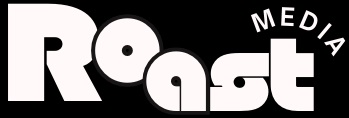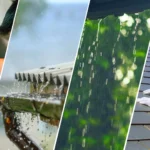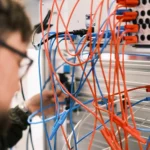Every seam tells a story. Whether it’s the precision of a flat-felled seam or the elegance of a French seam, the world of “nahttypen” (seam types) is rich with history, function, and creativity. Understanding these seam types is essential for anyone involved in garment construction, upholstery, or fabric-based crafts. This guide dives deep into the classification, applications, and technical aspects of “nahttypen,” equipping you with knowledge that will help you create durable, functional, and visually appealing designs.
What Are Nahttypen?
“Nahttypen,” or seam types, refer to the different ways fabrics are joined together during the sewing process. Seams serve both functional and decorative purposes, influencing the durability, aesthetics, and comfort of a garment or fabric product. Whether you’re a beginner or an experienced tailor, understanding the nuances of various seam types is key to achieving professional-looking results.
Historical Context and Evolution of Nahttypen
Seam types have evolved over centuries, shaped by advancements in technology, materials, and fashion trends. Historically, seams were constructed to ensure garments could withstand wear and tear while maximizing the use of limited resources. For example, flat-felled seams were favored in military uniforms for their durability, while decorative seams became prominent during the Renaissance as clothing took on a more artistic role. With the advent of sewing machines in the 19th century, the possibilities of seam construction expanded, leading to greater precision and efficiency.
Classification of Nahttypen The Basics
1. Plain Seam (Einfache Naht)
The plain seam is the most fundamental seam type, often used in everyday garment construction.
Applications: Common in lightweight fabrics and general-purpose sewing, such as shirts, dresses, and blouses.
Advantages:
- Easy to sew
- Minimal bulk
- Considerations:
- Requires finishing to prevent fraying (e.g., through pinking, serging, or binding).
2. Flat-Felled Seam (Flachnaht)
This seam type is known for its strength and neat finish, making it ideal for sportswear and unlined garments.
Applications:
- Activewear
- Denim jeans
- Advantages:
- Durable and clean finish on the inside and outside
- Considerations:
- Requires precise stitching and careful folding.
3. French Seam (Französische Naht)
The French seam is associated with elegance and a clean internal finish, making it perfect for delicate fabrics.
Applications:
- Sheer fabrics like chiffon or organza
- Advantages:
- Encases raw edges for a polished appearance
- Considerations:
- Adds bulk and is not ideal for heavy fabrics.
4. Bound Seam (Besetzte Naht)
The bound seam uses bias tape or a fabric binding to enclose raw edges, offering a clean and decorative finish.
Applications:
- High-end garments
- Upholstery
- Advantages:
- Adds a decorative touch while reinforcing the seam
- Considerations:
- Requires additional materials and accurate sewing.
5. Lapped Seam (Überlappnaht)
This seam type overlaps fabrics for added strength, frequently used in leatherwork and industrial sewing.
Applications:
- Outdoor gear
- Leather goods
- Advantages:
- Strong and weather-resistant
- Considerations:
- Visible stitching may not suit all designs.
6. Flat Seam (Flachnaht)
Flat seams are commonly used in activewear and undergarments to reduce bulk and improve comfort.
Applications:
- Sportswear
- Lingerie
- Advantages:
- Minimal bulk and chafing
- Considerations:
- Requires specialized machinery.
7. Decorative or Embellished Seams
Decorative seams are designed to enhance the aesthetics of a garment, often incorporating contrasting threads, embroidery, or topstitching.
Applications:
- Fashion-forward designs
- Custom pieces
- Advantages:
- Adds visual interest
- Considerations:
- May compromise durability if not reinforced properly.
Technical Aspects and Sewing Considerations
When choosing a seam type, consider factors such as:
- Fabric Type: Sheer fabrics pair well with French seams, while heavy fabrics benefit from flat-felled seams.
- Stress Points: High-stress areas, like armholes and crotches, require durable seams.
- Intended Use: Functional seams for activewear differ from aesthetic seams for decorative purposes.
Innovations in Seam Technology
The sewing industry has embraced technological advancements, offering features like:
- Seamless Bonding: Heat bonding techniques eliminate traditional stitching.
- Smart Materials: Seams that adjust to temperature or moisture levels.
- 3D Printing: Custom, seamless designs crafted with additive manufacturing.
How to Choose the Right Nahttyp
Selecting the appropriate seam type depends on the following criteria:
- Durability Needs: Opt for stronger seams for frequently washed or worn items.
- Aesthetic Goals: Use decorative seams to enhance the design.
- Budget: Some seam types require additional time, equipment, or materials.
Common Mistakes and How to Avoid Them
- Using the Wrong Seam for the Fabric: Testing a seam on fabric scraps beforehand can save time and material.
- Imprecise Stitching: Investing in a high-quality sewing machine and practicing can improve results.
- Ignoring Finishing Techniques: Always finish raw edges to prevent fraying and ensure longevity.
Care and Maintenance of Seams
Proper care extends the life of your seams:
- Washing and Drying: Follow fabric-specific guidelines to prevent stress on seams.
- Ironing: Use the appropriate heat setting to avoid damaging seam finishes.
- Repairs: Address minor issues, like loose threads, promptly to prevent seam failure.
Master the Art of Nahttypen
Understanding “nahttypen” opens up a world of possibilities for creating unique, long-lasting designs. Whether you’re sewing for functionality or style, knowing which seam type to use and how to execute it can make all the difference in the outcome of your project. Experiment with different seams and techniques to discover what works best for your needs.
For more in-depth insights into professional sewing techniques, explore our resources or get hands-on tips from our expert guides. Your perfect seam is just a stitch away.
Conclusion
Mastering the different types of seams and understanding their applications can elevate your sewing projects to a professional level. By combining the right seam type with the appropriate fabric and technique, you can ensure durability, functionality, and a polished appearance. Whether you are a beginner experimenting with basic stitches or an experienced sewer refining your craft, your knowledge of nahttypen will open up endless possibilities for creativity. Remember, every great project starts with a strong foundation – and that foundation often begins with the seam.
FAQs
1. What is the strongest type of seam?
The flat-felled seam is considered one of the strongest seams, often used in garments like jeans due to its durability and clean finish.
2. How do I choose the right seam type for my project?
Consider the fabric weight, the desired durability, and the final look of your project. Lightweight fabrics may benefit from French seams, while heavier materials might require flat-felled or lapped seams.
3. Can I sew all seam types by hand?
Yes, most seam types can be sewn by hand, but it requires time and precision. A sewing machine is more efficient and produces cleaner results for intricate seams.
4. What is a mock flat-felled seam?
A mock flat-felled seam mimics the appearance of a traditional flat-felled seam but is faster to sew. It is commonly used in casual clothing and sportswear.
5. How do I prevent seams from puckering?
Ensure you use the correct thread tension, needle size, and stitch length for your fabric. Testing on scrap fabric can help identify the best settings before sewing your final piece.











